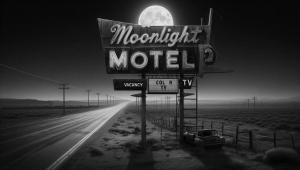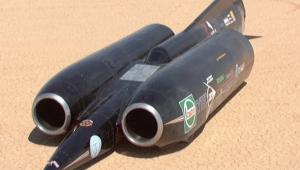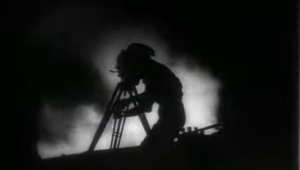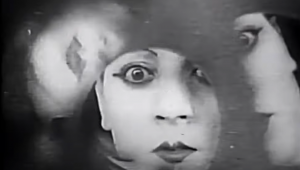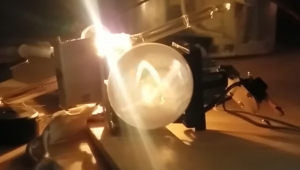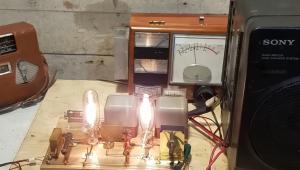Of course we all remember The Simpsons episode where Homer finds a Emerson Lake and Palmer CD on the street and has his Lucky Man day..
End of the Line for the Roadside CD

I know a thing or two about cars. My first car was a 1948 Willys Jeep. Paid $400 for it. Its principle feature was an immeasurably large number of teachable moments. I also know something about audio. After I built my first stereo FM radio, I discovered that I could clearly hear a 19-kilohertz pilot tone and that my radio had a technical problem.
One of humankind’s greatest achievements was the combining of cars and audio. I am referring, of course, to the car 8-track. On the list of immortal inventions, endless-loop tape cartridges rank up there with the wheel and floss. Among its many futuristic attributes, 8-track players offered head height alignment so bad that you routinely heard two songs at once. Some players had front-panel knobs so users could adjust head alignment to suit whatever tape they were playing. Still, what a wonderful format. Somewhere, there is a proud owner of a 1966 Nightmist Blue Thunderbird with a factory-installed 8-track player loaded and ready with The Rolling Stones’ “Some Girls” (mastered with extra verses so it fits neatly on the loop). Sir or Madam, I salute you.
The enormous popularity of dashboard 8-tracks was manifestly visible. Cruising down the road, it was common to see trees and bushes gaily festooned with ribbons of unspooled tape. How cool it would have been to have a way to scan the tapes as you passed, so you could hear the unfurled music, kind of like those highways with rumble strips that play a tune on your tires.
Then something interesting happened. The quantity of roadside highway tapes increased, even as their widths halved. That marked the coming of the Compact Cassette. And cassettes seemed to unspool even more prolifically than 8-tracks. Have you ever driven through a landscape taken over by kudzu, or watched a ticker tape parade in Manhattan? If I remember correctly, I can recall roads with about the same gross tonnage of cassette tape.
Then, of course, the roadside décor changed yet again. Tape started to disappear, replaced by bright, shiny plastic platters. Although rare and prized at first, Compact Discs soon, apparently, became popular items to hurl out your window. They were everywhere. When the discarded discs started to become more colorful, I could tell that recordable CD had gained significant market share.
Fast-forwarding to today, it doesn’t require a scientific study to see that roadside CDs are becoming scarce. You don’t often see CD wallets on visors anymore, and car makers are actively planning to delete that dashboard staple. Ask yourself, how do you use the CD loading slot in your car? To play CDs, or as a crevice to hold a phone mount?
Driving down the long and lonely highway, extremely acute trash spotters might spy a thumb drive or two and maybe even an SD card, but for all intents and purposes, we have reached the end of roadside audio formats. The CD is the last physical audio format we’ll see in automobiles. As the CD recedes, the shoulders, ditches, and drains will be a little cleaner. But also less musical.
Ah, a thought just occurred to me. If you are the nostalgic type, you might feel compelled to toss a few CDs for old time’s sake. But be aware: Where I live, littering carries a $100 fine.
- Log in or register to post comments


"You don’t often see CD wallets on visors anymore, and car makers are actively planning to delete that dashboard staple."
My 2014 Kia Soul (Base model) came with a "fully loaded" entertainment system...that didn't have a CD player. Took me a week after I bought it to realize it was missing!
